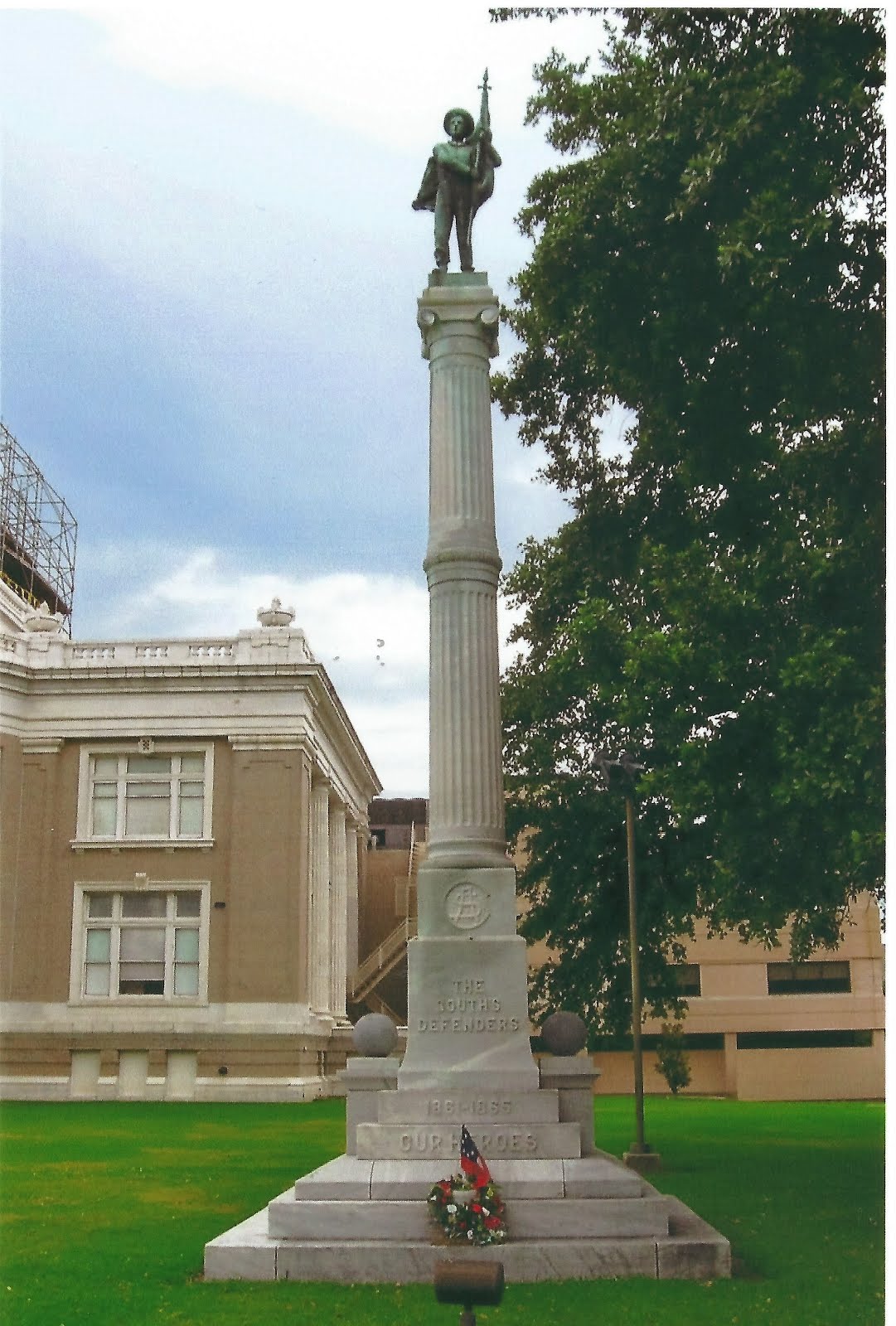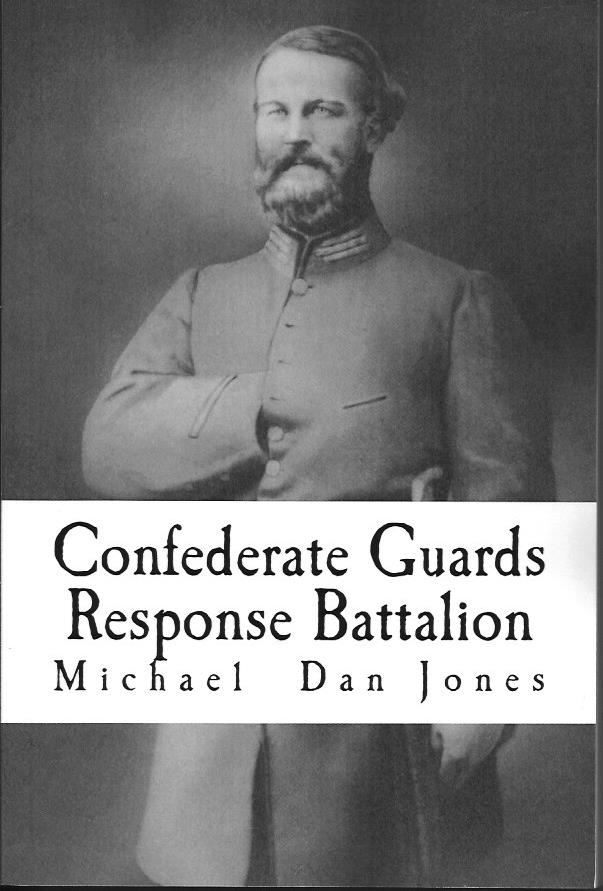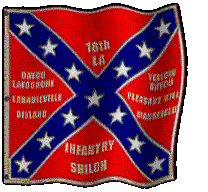Click 👉 Today in History (general history), July 22.
On This Day in Confederate History, July 22.
1861: Confederate Brigadier General Bernard Bee died on this day after being mortally wounded in the First Battle of Manassas. He
gained lasting fame for rallying his brigade behind that of Brigadier
General Thomas J. Jackson. He is reported to have said, "There is
Jackson standing like a stone wall! ... Rally behind the Virginians!"
Bee received his fatal wound shortly thereafter.
Lt. Gen. Thomas J. "Stonewall" Jackson
Confederate Hero, Military Genius
Stonewall Jackson Monument
Manassas National Battlefield Park
(National Park Service)
1862: Vicksburg Campaign: The Confederate ironclad CSS Arkansas at Vicksburg, Miss., was attacked by the USS Essex, Queen of the West, and Sumter. The Essex dueled at close range with the Arkansas and
inflicted some damage on the Confederate vessel. Then the Queen of the
West rammed it but did no serious damage. The Queen then withdrew but Arkansas scored a hit while it was withdrawing. Arkansas survived the attack and work on repairs continued.CSS Arkansas
(U.S. Naval Historical Center)
1863: A
skirmish at the Eagleport crossing of the Muskingum River in Ohio took
place between about 600 cavalrymen under Brigadier General John Hunt
Morgan and the local militia. The Confederate horse soldiers quickly
dispersed the militiamen and crossed the river.
A typical Confederate cavalryman.
(Painting by W.L. Sheppard)
1864: The Battle of Atlanta, Ga. occurred
on this day when Gen. John Bell Hood's Army of Tennessee attacked the
Northern army of Maj. Gen. W.T. Sherman's flank, which was being
defended by Federal Maj. Gen. Maj. Gen. Grenville Dodge's XVI Corps.
Federal Maj. Gen. James McPherson, commander of the Army of the
Tennessee, was mortally wounded and captured by Confederates while
riding to Dodge's corps. McPherson died soon afterward. Hood had 40,438
men in the assault, while the blue coats had 34,863 in strong defenses.
While the Confederates fought valiantly, the attacks all failed with
heavy casualties. The Yankees lost about 3,400 casualties and the
Confederates lost about 5,500. Among the killed on the Confederate side
was Maj. Gen. William H.T. Talker and Brig. Gen. Samuel Benton.
Major Philip Van Hor Weems
Co. H, 11th Tennessee Infantry Regiment
He was mortally wounded in the Battle of Atlanta.
(Liljenquist Collection, Library of Congress)
Confederate General Birthdays, July 22.
Major General John George Walker was
born on this day in 1821 in Cole City Missouri. Although he didn't have
a military education, he served as a first lieutenant in the Regiment
of Mounted Rifles in the Mexican-American War. He was brevetted a
captain for his gallantry at San Juan de Los Llanos and suffered a wound
at Molino del Rey. Walker stayed in the army after the war until July
1861 when he resigned and joined the Confederate Army as a cavalry
major. He was then promoted to lieutenant colonel of the 8th Texas
Cavalry, then to colonel. Walker was promoted to brigadier general in
January 1862 and led a brigade of infantry in the Army of Northern
Virginia at the Battle of Sharpsburg, Md. where he was wounded. In
November 1862 he was promoted to major general and given command of a
whole Texas infantry division, which gained fame in the Trans-Missippi
Department as Walker's Greyhounds. His battles and campaigns included
the Peninsula, Malvern Hill, South Mountain, Milliken's Bend, Mansfield,
Pleasant Hill (wounded), and Jenkins' Ferry. After the Red River
Campaign of 1864, he became commander of the Army of Western Louisiana
where he finished the war. Following the war, he lived temporarily in
Mexico and then joined his wife in London, England. Later he returned to
the U.S. and was eventually was made the U.S. Consul in Bogota,
Columbia, and as Special Commissioner to the Pan-American Convention.
Walker died July 20, 1893, in Washington, D.C., and was then buried in
Stonewall Cemetery in Winchester, Va.

Maj. Gen. John G. Walker
👱
Brigadier General Hamilton Prioleau Bee was
born on this day in 1822in Charleston, South Carolina. He was the older
brother of Brigadier General Barnard E. Bee, who ironically died on the
same day from his mortal wound at First Manassas in 1861. The family
moved to Texas in 1835, where his father Barnard Bee Sr., became a
leader in the Texas Revolution and the Texas Republic. During the
Mexican-American War, Hamilton Bee served in Benjamin McCulloch's Co. A,
of Col. Jack Hays' 1st Regiment of Texas Mounted Volunteers, then as a
second lieutenant in Mirabeau B. Lamar's company in Col. Peter
Hansborough Bell's Regiment of Texas Volunteers. After the war, he
served in the State of Texas House of Representatives and was Speaker of
the House. Bee was elected a brigadier general in the Texas militia in
1861 and then appointed a brigadier general in the Confederate Army. He
spent much of the war in South Texas commanding there until the Red
River Campaign of 1864 in Louisiana when he led his brigade in the
Battle of Mansfield, the Battle of Pleasant Hill (slightly wounded), and
in various battles and skirmishes to the end of the campaign. Following
the war, Bee lived with his family in Saltillo, Mexico, and didn't move
back to Texas until 1876. He then became the superintendent of the farm
on what would become Texas A&M University, practiced law in San
Antonio, and served as Texas Commissioner of the Office of Insurance,
Statistics, and History. Bee died on October 3, 1897, in San Antonio,
and is buried in the Confederate Cemetery in San Antonio.

Brig. Gen. Hamilton P. Bee












































.jpg)









